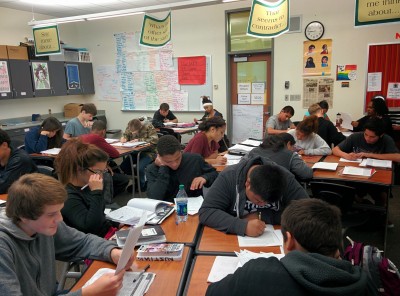One thing I am constantly learning as I grow as a teacher-leader is that systems are all far more complex than they may seem from the outside. This week at the Washington Educator Conference in Seatac, I-1351 and the McClearly case have been frequent topics of conversation. In particular, I found AWSP’s position on 1351 interesting.
McClearly and I-1351. The two are inexorably linked: both call for improvements to the Washington education system. Both have at heart (I believe) what is best for students and schools in Washington. Both, however, bring many, many dollar signs. As a result, I’m hearing again and again here at WEC that no matter what solution (“solution” = me being optimistic) precipitates from this coming legislative session it will need to include new revenue. That’s polite language for taxes.



